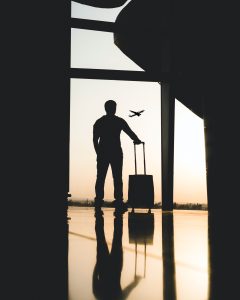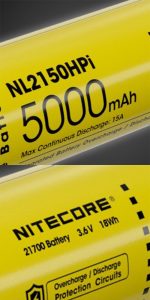Key Takeaways:
- Flashlights are permitted in both carry-on and checked bags, but specific rules must be followed.
- Battery flashlights are allowed depending on their make, lithium content, and Watt-Hours
- Although there are no specific guidelines for headlamps, it is advisable to adhere to the same rules as flashlights.
When preparing for air travel, it's essential to understand the rules regarding items allowed in your carry-on and checked baggage. As more people plan to fly this summer, we have conducted research to determine whether flashlights and headlamps are permitted on planes. In this article, we will explore the regulations and guidelines concerning these portable light sources, ensuring you are well-prepared for your next flight.
Are flashlights allowed on planes?
Flashlights are generally allowed in both carry-on and checked baggage. We recommend putting your flashlight in lockout mode or removing the batteries to prevent accidental activation. The Transportation Security Administration (TSA) regards flashlights as tools and advises that flashlights under seven inches can be carried in either a carry-on or checked bag. If the flashlight is larger than that, it must be packed in checked luggage. Flashlights with glass-breaking or self-defense strike bezels should be packed in checked bags due to their sharp points, which can be considered dangerous and are not permitted in carry-on bags.
From the TSA Website
Carry-On Bags: Yes
Checked Bags: Yes
Note: The final decision rests with the TSA officer on whether an item is allowed through the checkpoint.
See the TSA’s 'What Can I Bring?' page for more prohibited items.


What about flashlight batteries?
If you're using flashlights that operate on batteries such as AA, AAA, C, or D, you can bring them in either your carry-on or checked luggage. However, the regulations become more complex when it comes to lithium batteries.
According to the TSA, lithium-ion and lithium-metal batteries, including power banks and cell phone charging cases, must be carried in carry-on baggage and should have a watt-hour (Wh) rating of under 100. If you're uncertain about the watt-hour rating of your flashlight's battery, you can calculate it using the milliamp hours (mAh) and voltage (V) using the following formula:
mAh x V / 1000 = Watt-Hours (Wh)
For example, let's consider the Nitecore SRT7i flashlight, which uses a NL2150HPI rechargeable battery. The battery indicates a capacity of 5000mAh and a voltage of 3.6V. Using the formula:
5000 x 3.6 / 1000 = 18 Wh
Based on this calculation, the battery falls within the allowable limit for air travel. If you prefer not to calculate manually, you can use an online calculator for convenience. It's always useful to know this calculation in case you have a battery that doesn't provide the watt-hour information.
Are headlamps allowed on planes?
Headlamps are typically permitted on planes. Similar to flashlights, headlamps powered by disposable batteries can be packed in both carry-on and checked baggage. However, if your headlamp uses rechargeable lithium batteries, it's advisable to carry it in your carry-on luggage and follow the same precautions mentioned for flashlights. While the TSA does not specifically list headlamps as prohibited items, the final decision rests with the TSA officer at the security checkpoint. It's also recommended to check the official website of your airline for specific guidelines on battery-powered devices, including any size or quantity restrictions.

Recap:
In most cases, flashlights and headlamps are allowed on airplanes, making them convenient travel companions for various purposes. By adhering to the regulations outlined by your airline and following safety precautions, you can bring these portable light sources along on your journey without any issues. Remember to pack them appropriately, comply with battery restrictions, and stay informed about any changes in airline policies to ensure a smooth and well-lit travel experience.


One thought on “Traveling Light, Literally: A Guide to Bringing Flashlights and Headlamps on Airplanes”
-
Pingback: Homepage
Leave a Reply